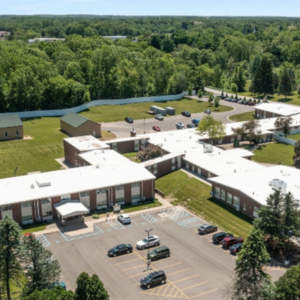The (Sometimes Surprising) Milestones in Recovery

Seemingly subtle changes can actually be significant signs of healing, and cause for celebration.
When we have a loved one who begins treatment for a disease, it is normal to want to know what to expect. Can we look forward to a cure or are we just trying to get more quality time? Will it be something they live with forever? How will we assess the effectiveness of the course of treatment? And what will be the next step if we find that treatment isn’t working? How is life going to change? What is the prognosis?
Milestones in Recovery
When a loved one begins treatment for the disease of addiction all of these questions still apply. And even though relapse is sometimes a part of the recovery process, as it is with other diseases , there are still ways to assess whether healing is happening and the current plan for treatment is effective. Behaviors are some of the most obvious symptoms in the progression of addiction. But behaviors are also a sign that healing is happening; it’s knowing what to look for.
Understanding Addiction as a Disease
Addictive substances have the potential of triggering a dopamine release in the brain at levels beyond our wildest imagination. These levels can actually be similar to holding your baby for the first time – associated with significant natural releases of dopamine. Keep in mind, we depend on dopamine for survival. So, the short explanation is that with persistent use over time, a human’s brain begins to associate the substance with survival. The brain becomes dependent on the substance for dopamine. This debilitating chemical imbalance causes the brain to malfunction.
A human will do crazy things to survive…behaviors that even they would never imagine engaging in. In a malfunctioning brain, that now associates substance with survival, it translates into doing some crazy things to use. If we understand the survival-use association that happens in the brain, we can better understand how to evaluate progress. And we can also better understand how seemingly subtle changes can actually be significant signs of healing.
Milestone #1 – Post-Acute Withdrawal Syndrome (PAWS)
Depending on the duration and intensity of alcohol or other drug addiction, individuals can experience psychological and physical discomfort known as Post-Acute Withdrawal Syndrome (PAWS). PAWS can occur weeks or even months into recovery. While temporary, the symptoms can become a driving factor in relapse. Getting to the other side of these symptoms can be an uphill battle, so don’t hesitate to celebrate this accomplishment (sober celebration of course).
Think of withdrawal symptoms like your muscles hurting the day after a really great work out. You know it’s a good hurt right? PAWS mean the brain is trying to correct things like chemical imbalances that happened while using. It’s a good hurt! Here is a list of common Post-acute Withdrawal Symptoms that ebb and flow throughout the recovery process and will become less frequent and less intense over time.
- Foggy thinking/trouble remembering
- Urges and cravings
- Irritability or hostility
- Sleep disturbances—insomnia or vivid dreams
- Fatigue
- Issues with fine motor coordination
- Stress sensitivity
- Anxiety or panic
- Depression
- Lack of initiative
- Impaired ability to focus
- Mood swings

Getting to the other side of symptoms can be an uphill battle, so don’t hesitate to celebrate this accomplishment!
More Milestones in Recovery
Engagement/Motivation
Engaging actively in treatment is a sign that the initial obstacle of denial has been overcome. Denial is one of the most impressive automatic defenses that an addicted brain can develop. Think about it. If a brain is firmly rooted in denial, nothing can penetrate that wall. Things like guilt, consequences, and facts, are null and void. They are blocked from entry into an addicted brain’s perception of reality.
If guilt or consequences were allowed to enter into consciousness, then the addiction would truly be at risk. We are wired to survive and reproduce. So, when the wires (neural pathways) of survival get entangled with the wires (neural pathways) associated with the effects of a substance, our brain develops the same automatic defenses to use as to survive. In short, our brain is malfunctioning much like a heart malfunctions with a heart disease or an immune system with an autoimmune disease.
Engagement in treatment means curiosity and initiative have come back online in the recovery process. In other words, things are getting untangled up there so our neocortex (the part of the brain where rational thinking is housed) can join the party. This sign of healing should not be overlooked, even though there will be more obstacles to overcome.
Increased Resilience
More appropriate stress responses and less or weaker triggers means that the brain is healing. The more protective factors we have in place to avoid impulsive use, the less strength the shortcuts have from an environmental cue to use. Increased resilience means that avoiding those impulsive shortcuts to immediate gratification has allowed longer routes to develop. And in so doing, switching from impulse route to thoughtful route.
I always recommend the “scenic” route. When it comes to neural pathways, the more you use a particular pathway the more you will continue to use it. This also means the less you use it the less you will continue to use it. Clear as mud? The new neural pathway is your favorite pen that you leave on your desk within arms-reach. And the old one is the clicker pen that keeps getting pushed further back in the junk drawer due to lack of use.
On the continuum of adaptive mental states (calm, alert, alarm, fear, terror), the baseline has also been lowered. A healthy mental state baseline should be calm and only increase for the purpose of survival, or when a stressor is presented. But because of the survival-use connection that the brain has already made, it suggests that an addicted individual’s baseline mental state is probably consistently at alert or alarm (at best). Introduce any stressor and up the continuum we go with an exaggerated stress response.
Increased resilience suggests that the baseline mental state has been lowered, is now calm, and capable of reasoning, abstract thought, etc. It also means a more reasonable and adaptive stress response.

Showing up for life is another milestone of neurological healing.
Increased Consistency, Routine, and Reliability
For example, school, work, scheduled appointments, exercise, etc. It means there are new (non-addictive) neural pathways being used to combat the addictive pathways as they get stronger. Routine helps with that.
When the disease of addiction is active, it can hijack the brain at any point during the day, producing the signal that survival is dependent on use right now. It can distract a person with the best of intentions and derail the plans for the day. These hijacking thoughts are often referred to as “triggers” or cravings, but those words don’t always do justice to the intensity of the felt experience. The compulsion to use can be as strong as the will to survive.
This healing process can take a lot of time. It’s the reason that most successful recovery management programs are a full year or more. It’s also the reason that some people may need the structure and protection provided by residential stay in treatment to kick-start the healing process. Increased consistency, reliability, and routine in behavior translates into the individual gaining more of a sense of control and choice.
Milestones in Recovery – Improved Sleep
This will lead to exponential improvements and healing! Mental health will begin to improve, irritability decreases, memory motivation and energy will improve. All of these things help the healthy neural pathways stay activated more easily. Do not underestimate the importance of good sleep-hygiene in the recovery process.

Are we beginning to see why the brain seems to fall so deeply in love with the substance?
Relationship Repair
Repaired relationships signal that crucial, but difficult milestones have been reached in the neurological healing process. Denial and defenses are down and shame has come within more tolerable limits, allowing the amends process to begin. Thank goodness, because shame is a driving factor in addiction. Our brain experiences and responds to shame in the same way it does fear. Our survival instincts kick in.
Relationship repair means that our brain is beginning to seek out healthy alternatives that can trigger dopamine release. It is the dopamine flood triggered by substances that can lead to addiction. Only things like holding your baby for the first time, getting married, or other deeply intimate attachment experiences produce dopamine at levels even remotely similar to that of substance use.
Are we beginning to see why the brain seems to fall so deeply in love with the substance and chooses it over relationships? When an individual begins to initiate relationship repair and pursues relationships over addictive substances, the addiction is losing strength.
Physiological Healing
Feeling physically better and having a healthier body is a huge milestone in recovery. Addiction can damage every system in the body from the endocrine system to the skeletal system, causing all kinds of co-occurring medical issues. Feeling better and being healthier means these systems are healing. Our body is absorbing the nutrients it needs to function better. A bonus is that you look better too!
Spiritual Engagement/Sense of Purpose
When the human brain is regulated and not in “survival mode” life gets bigger and our lens gets wider. The survival instincts are activated and we get tunnel visioned and hyper-focused on staying alive. This is unlike the false sense that substance use is a means to survival. When our lens widens we are able to get back in touch with parts of ourselves that are quieted during active addiction. The healing process allows us to re-engage with values, passions, and a sense of meaning. It also lets us connect with something or someone larger than ourselves.
More evolved parts of ourselves re-emerge when our neocortex is healthy and communicating with the rest of the brain. I like to think that our animal instincts join our human nature when the whole brain is operating. We can then attach more intimately, love more deeply, and live with purpose.
Relapse?
Although a relapse can still happen at any point between all of these milestones in recovery, it doesn’t negate the healing and improvement that happened prior to the relapse. It’s this groundwork healing that may help a person get back on board with their recovery program more quickly.
Milestones in recovery? These small and/or significant changes are cause for celebration. It’s helpful to keep in mind that the sobriety-based symptoms are precisely what make staying sober so challenging. Recovery is progressive, just as the disease is progressive. Be patient with yourself. A healthy recovery program that integrates PAWS is the key to managing and preventing relapse, thus allowing for the achievement of sobriety, as well as a fulfilled life in recovery.
Rae Green, JD, LPC, CAADC, Founder and President, Sanford Addiction Treatment Centers



